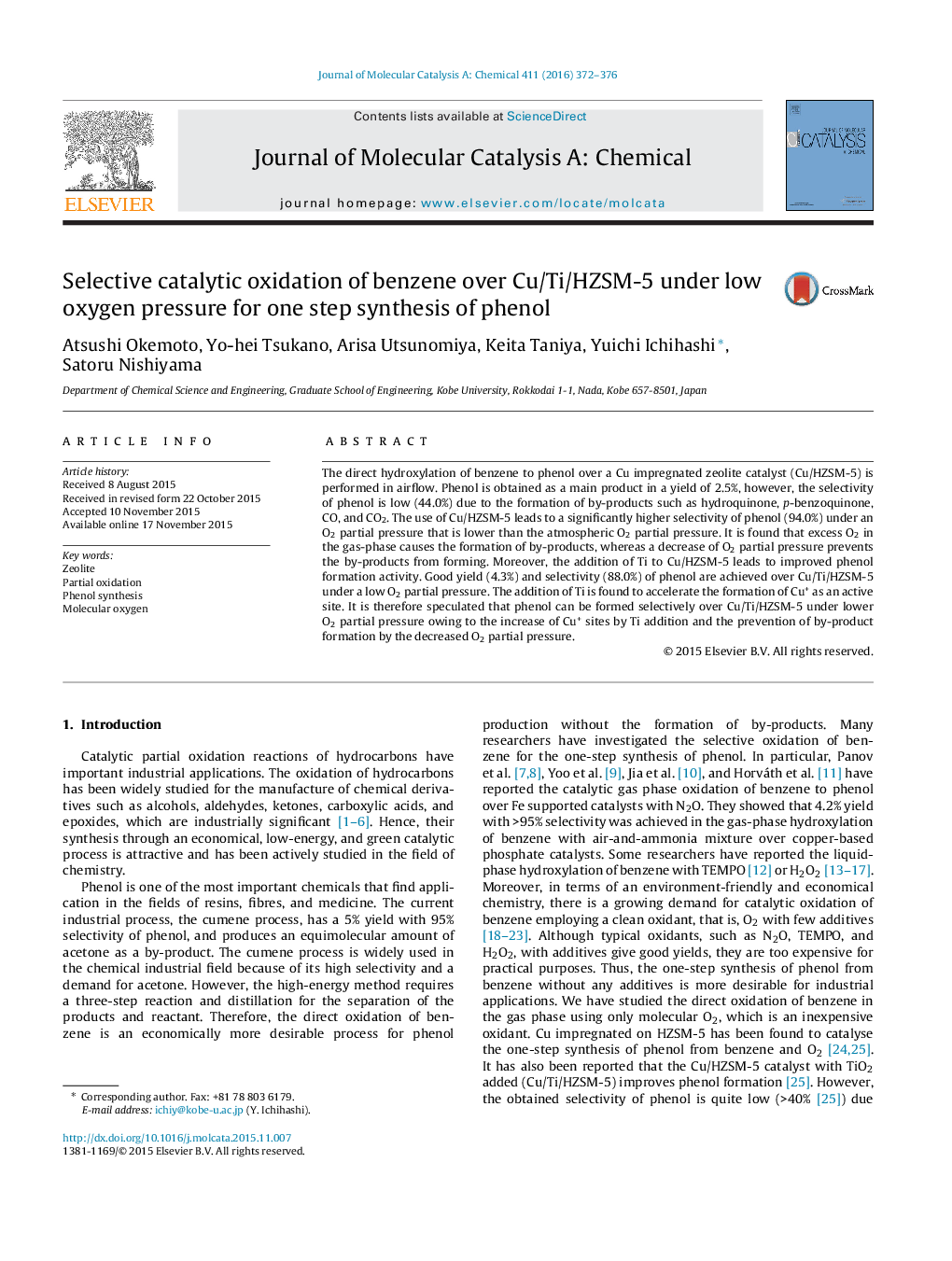| کد مقاله | کد نشریه | سال انتشار | مقاله انگلیسی | نسخه تمام متن |
|---|---|---|---|---|
| 64800 | 48370 | 2016 | 5 صفحه PDF | دانلود رایگان |
• Cu/HZSM-5 catalysed the direct oxidation of benzene to phenol using molecular oxygen.
• Yield and selectivity of phenol depended on the O2 partial pressure in the reaction flow.
• Ti addition to Cu/HZSM-5 led to the improved phenol activity.
• High yield (4.3%) and selectivity (88.0%) of phenol were achieved over Cu/Ti/HZSM-5 under a low O2 partial pressure.
The direct hydroxylation of benzene to phenol over a Cu impregnated zeolite catalyst (Cu/HZSM-5) is performed in airflow. Phenol is obtained as a main product in a yield of 2.5%, however, the selectivity of phenol is low (44.0%) due to the formation of by-products such as hydroquinone, p-benzoquinone, CO, and CO2. The use of Cu/HZSM-5 leads to a significantly higher selectivity of phenol (94.0%) under an O2 partial pressure that is lower than the atmospheric O2 partial pressure. It is found that excess O2 in the gas-phase causes the formation of by-products, whereas a decrease of O2 partial pressure prevents the by-products from forming. Moreover, the addition of Ti to Cu/HZSM-5 leads to improved phenol formation activity. Good yield (4.3%) and selectivity (88.0%) of phenol are achieved over Cu/Ti/HZSM-5 under a low O2 partial pressure. The addition of Ti is found to accelerate the formation of Cu+ as an active site. It is therefore speculated that phenol can be formed selectively over Cu/Ti/HZSM-5 under lower O2 partial pressure owing to the increase of Cu+ sites by Ti addition and the prevention of by-product formation by the decreased O2 partial pressure.
Figure optionsDownload high-quality image (98 K)Download as PowerPoint slide
Journal: Journal of Molecular Catalysis A: Chemical - Volume 411, January 2016, Pages 372–376
